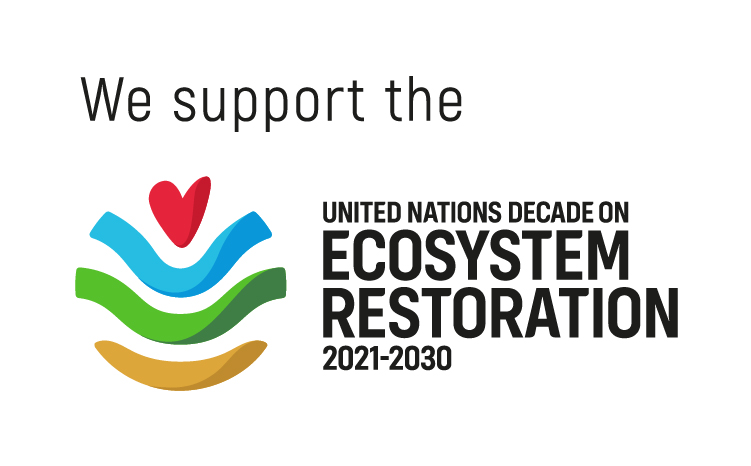Trees for Tigers®
Sundarbans National Park, West Bengal, India
Available for Adoption upto: 194,053 Trees
Project Purpose
Trees for Forests™ & WildlifePlant Now Location

Previously, the tree plantation project was implemented in 2 parts, one part in the area between Satjelia Bazar to Mitrabari Khey Ghat and the second part in the area between Sukumari Kheya Ghat to Anpur Village at the periphery of Sundarbans National Park, South 24 Parganas, West Bengal, India. In FY 2024-25, 2,10,000 trees will be planted in the villages of Ranabelia, Randhanagar, Manmathanagar, Harispur, and Ramnagar in Gosaba Block, South 24 Parganas, West Bengal, India.

Enhancement of
Biodiversity

Carbon Sequestration

Disaster Mitigation

Increase in
Green Cover

Reduction of
Man-Animal Conflict

Generation of
Rural Employment

Improvement of
Wildlife Habitats
Why Trees?
Tigers can survive in diverse environments such as forests, grasslands, mangrove swamps and snowy forests. An article by WWF states that tiger habitats have shrunk by around 95% over the past hundred years.[1] This underscores the urgency to safeguard their natural habitats. Tree plantation not only holds the promise of enhancing wildlife habitats, but also contributes to global climate change mitigation goals.
The negative consequences of climate change on the Sundarbans region are evident. A research paper titled, Climate change impacts on Indian Sundarbans: a time series analysis’ reveals that heightened salinity downstream has affected water transparency and diminished phytoplankton and fish populations in the area.[2] Tree plantation emerges as a potential solution to alleviate some of these consequences. In fragmented landscapes like the Sundarbans, planting trees will help maintain ecosystem connectivity and biodiversity. Research indicates that tree plantation conserves biodiversity in fragmented landscapes, providing habitat for local species.[3]
Mangroves form the most important and unique feature of this area with their ability to thrive both in dry as well as flood-like conditions. Due to the presence of both saltwater and freshwater, both types of plants are present and support the habitat in their own unique way. Planting trees provide habitat continuation and form links in the area to prevent habitat isolation for the Tigers, categorised as endangered in the IUCN red list of threatened species.[4] Trees also provide shelter and enable them to camouflage.
Studies have found that land loss due to rising sea levels and erosion is causing the displacement of rural communities (entire villages in some cases) and exacerbating poverty. The loss of mangrove cover in the area is alarming, especially in the Gosaba block, which forms the primary project area. An article by The Hindu suggests that climate change, sea level rise, sediment starvation, all have contributed to land loss and thus loss of forest cover.[5] Sucharit B Neogi et al. talks about the role of mangroves in food security, containing the effect of storm surges and tsunamis, creating livelihood opportunities, CO2 sequestration, sediment trapping, nutrient recycling, etc.[6]
The forest products available for collection, use and sale are honey, beeswax, resins, fruits, leaves, twigs and bark form the majority of the non-timber forest products in both India and Bangladesh. They contribute 79% of the average annual income to the collector’s family (Anshu Singh). Recent satellite analysis by the Indian Space Research Organisation (ISRO) shows that in the last ten years, 3.7% of the mangrove and other forests in the Sundarbans have disappeared, along with 9,990 hectares of landmass, due to erosion.[7]
Tree Species
In this tree plantation initiative, species like Jat baen /Indian mangrove (Avicennia officinalis), Kankra / Black Mangrove (Bruguiera gymnorrhiza), Garjan / Tall-stilt mangrove (Rhizophora apiculata) will be planted.
By strategically planting trees, especially local species, the Sundarbans region can create a more favourable environment for tigers, which will also support their habitat and prey base. By planting trees, especially local species that are adapted to the local conditions, we can bolster ecosystem resilience, thereby fostering the sustainability of the entire region.
The Food and Agricultural Organisation (FAO) of the United States emphasises the importance of mangroves in the food web of coastal ecosystems, therefore, making a direct impact on the terrestrial and aquatic life of the area.[8] Mangrove Society of India's Executive Secretary Dr Arvind Untawale, mentions the significance of mangroves against tsunamis, pollution, protecting marine biodiversity and producing medicinal products.
Social Impact
The Sundarbans are threatened by various challenges, namely, population pressure, spatial transformation, excessive resource extraction, salinization, sea-level rise, and climate change, thus, making it difficult for it to survive even till 2100 (WWF Report, 2017). The project aims to address some of these issues. The tiger forms a very important part of both the ecology and economy of the Sundarbans, providing great economic returns. D. Balasubramanian mentions in his writing, the various functions of a tiger reserve that contributes to ecology, the economy as well as culture and planting trees contribute to the habitat conservation of the tiger thus contributing to the tiger and other wildlife conservation in the long run.
Thus, the plantation of mangroves around villages at the Periphery of the Sundarbans National Park directly impacts rural livelihoods by creating jobs in nursery and tree plantation activities, improve fisheries catch, provide flowers, fruit, fodder and fuel to rural communities and wildlife, generate oxygen, reduce carbon dioxide in the atmosphere, fight climate change, and benefit endemic wildlife including the endangered Tiger. Reforestation thus provides ample livelihood opportunities for the people in the buffer area, preventing them from venturing into the forest and minimising chances of conflict and empowerment of the dwellers as a result. Upon maturity, each tree can absorb approximately 20 kg of CO2 per year which is considered globally as a conservative estimate for sequestration potential of trees.
Adoption Summary
|
Name of the Company |
Number of Trees Planted |
Fiscal Year |
|
EY GDS |
50,000 |
2023-24 |
| EY GDS |
14,000 |
2023-24 |
[1] Tigers: Possibly the World’s Most Iconic Big Cat Species | World Wildlife Organisation
[2] Raha, A., Das, S., Banerjee, K., & Mitra, A. (2012). Climate change impacts on indian sunderbans: a time series analysis (1924–2008). Biodiversity and Conservation, 21(5), 1289-1307.
[3] Martello, F., Bello, F., Morini, M., Silva, R., Souza-Campana, D., Ribeiro, M., … & Carmona, C. (2018). Homogenization and impoverishment of taxonomic and functional diversity of ants in eucalyptus plantations. Scientific Reports, 8(1).
[6] Neogi, S. B., Dey, M., Lutful Kabir, S. M., Masum, S. J. H., Kopprio, G. A., Yamasaki, S., & Lara, R. J. (2016). Sundarban mangroves: diversity, ecosystem services and climate change impacts.
[7] Narayan, Nayantara. ‘The shrinking islands of the world’s largest mangroves have triggered a refugee crisis.’ The Quartz: 18 March 2015: Google. Web
[8] Mangrove Management | The Food and Agricultural Organisation (FAO)










